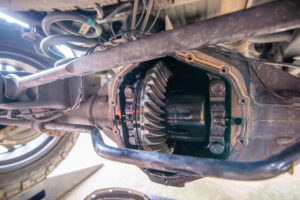Minivans Receive Poor Grades When It Comes To Rear Passenger Safety

Minivans are a very popular vehicle choice among parents to transport their families to school, soccer practice, ballet, karate, and family vacations. So naturally, one would assume that the second row of seating would have some of the best safety features around. According to the IIHS (Insurance Institute for Highway Safety), that’s not the case.
RELATED: Two Jeep Grand Cherokee Models Land The Highest Safety Awards from the IIHS
In a series of crash tests involving four popular minivans (Chrysler Pacifica, Kia Carnival, Toyota Sienna, and Honda Odyssey), they were tested on the quality of safety provided to passengers seated in the second row of seats. Unfortunately for all four minivans, none of them received an “acceptable” or higher rating.
“Back seat safety is important for all vehicles, but it’s especially vital for those, like minivans, that customers are choosing specifically to transport their families,” says IIHS President David Harkey. “It’s disappointing that automakers haven’t acted faster to apply the best available technology to the second row in this vehicle class.”
According to the results, the Chrysler Pacifica, Kia Carnival, and Toyota Sienna all received “marginal” grades, while the Honda Odyssey received a “poor” rating. All minivans except the Toyota Sienna did not have seat belt reminders for passengers in the second row.
The IIHS has raised the safety standards for all of its tests involving vehicles of every kind, and minivans are no exception.
How Did The Minivans Score in the Test?
In the previous test for these four vehicles, researchers found that newer minivans displayed risks of fatal injuries was higher for belted passengers in the second row than for those in the front. It is not because the second row became less safe, but rather because the front row received greater improvements in airbags and seat belts. These kinds of updates are rarely seen with second-row passengers.
But even with these developments, the IIHS still maintains its position that the rear seat remains the safest place for small children. If seated in the front, a child can be injured by an inflating front airbag, and the safety ratings in the front seat are based on data gathered by adult-sized crash test dummies.
Regarding the most recent tests, a child-sized passenger dummy was positioned in the second row behind the driver. The structure of the occupant compartment must maintain adequate survival space for the driver, and results showed that the measurements taken from the driver dummy shouldn’t show any excessive risk of injuries.
Front Row vs Second Row
While all four minivans tested well for protecting the front seat, it was the second row of seats that each of the models experienced multiple issues.
“The restraint systems in all four vehicles leave the second-row occupant vulnerable to chest injuries, either because of excessive belt forces or poor belt-positioning,” says Jessica Jermakian, IIHS vice president of vehicle research. “That’s concerning because those injuries can be life-threatening.”
Of the four minivans, the Sienna is the only one equipped with belt pre-tensioners and force limiters for its passengers. But despite these, a dummy seated in the rear still submarined below their lap belt, and the shoulder belt managed to travel behind the dummy’s neck during the test.
For the Carnival and Pacifica, the seat belts exerted too much force onto the dummy’s chest. Also, the side curtain airbag failed to deploy on the Pacifica at the time of the collision.
While the forces sustained to the rear dummy’s neck were within reasonable limits for the Pacifica and Sienna, they were significantly higher for the Carnival, increasing the odds that the rear passenger would receive an injury to the head or neck.
For the poor-rated Odyssey, the forces sustained to the head and neck were greater, and the crash video shows that the seat belt failed to prevent the rear-seat passenger’s head from coming into complete contact with the front seatback, increasing risks for head injuries.
How To Receive a “Good” Rating
In order for a vehicle to receive a “good” rating, the second-row dummy cannot receive any excessive risk of injury to the head, neck, chest, or thigh. The dummy needs to remain correctly positioned at the time of the crash without submarining, and the head also needs to remain a safe distance away from the front seatback, as well as the rest of the vehicle’s interior. Unfortunately for the minivans involved in the test, none of them were able to meet these standards.









